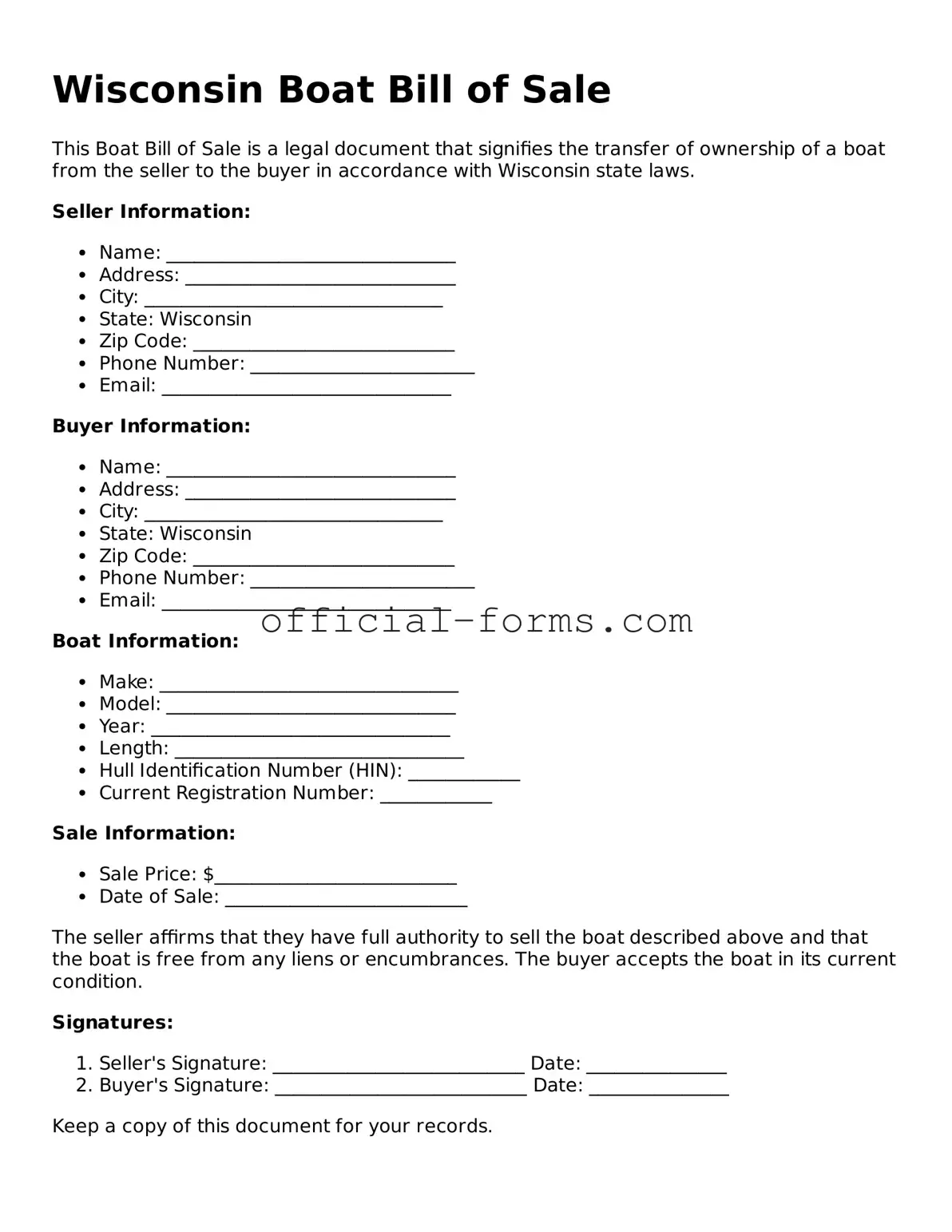Filling out the Wisconsin Boat Bill of Sale form can seem straightforward, but several common mistakes often lead to complications. One frequent error is failing to include the complete names and addresses of both the buyer and the seller. Incomplete information can create confusion and may delay the transfer of ownership. Always ensure that this information is accurate and clearly written.
Another common mistake is neglecting to include the boat's identification number. This number is crucial for registering the boat and confirming its ownership. Without it, the transaction may not be recognized by the state, leading to potential legal issues down the line.
People often overlook the need for a clear description of the boat. This includes details such as the make, model, year, and color. A vague description can lead to disputes about the boat being sold. Providing specific details helps protect both the buyer and seller.
Many individuals fail to indicate the sale price of the boat. This is not just a formality; it is important for tax purposes. The absence of a sale price can raise questions during registration and may result in penalties. Always include the agreed-upon price in the form.
Another mistake involves signatures. Both parties must sign the document for it to be valid. Sometimes, sellers think a signature is unnecessary if they are not present at the time of the sale. However, without both signatures, the bill of sale is incomplete and may not be enforceable.
People sometimes forget to date the bill of sale. The date is essential for establishing the timeline of the transaction. Without a date, it becomes difficult to prove when the sale occurred, which can complicate matters if disputes arise later.
In some cases, sellers fail to provide any warranties or disclaimers about the boat's condition. A simple statement about the boat being sold "as-is" can prevent misunderstandings regarding the boat's condition. This protects the seller from future claims about defects.
Another common oversight is not keeping a copy of the completed bill of sale. Both parties should retain a signed copy for their records. This documentation serves as proof of the transaction and can be vital if any issues come up later.
Finally, individuals often forget to check for any local regulations or additional requirements that may apply. While the Wisconsin Boat Bill of Sale form covers many aspects, there may be specific local laws that need to be addressed. Researching these requirements beforehand can save time and prevent headaches.
